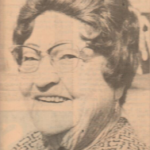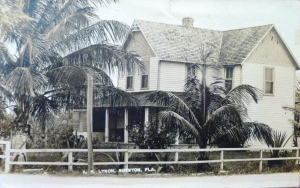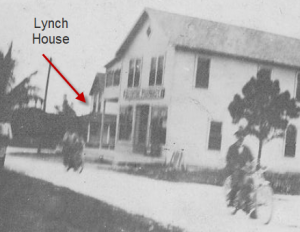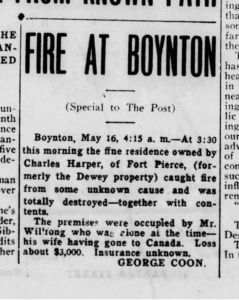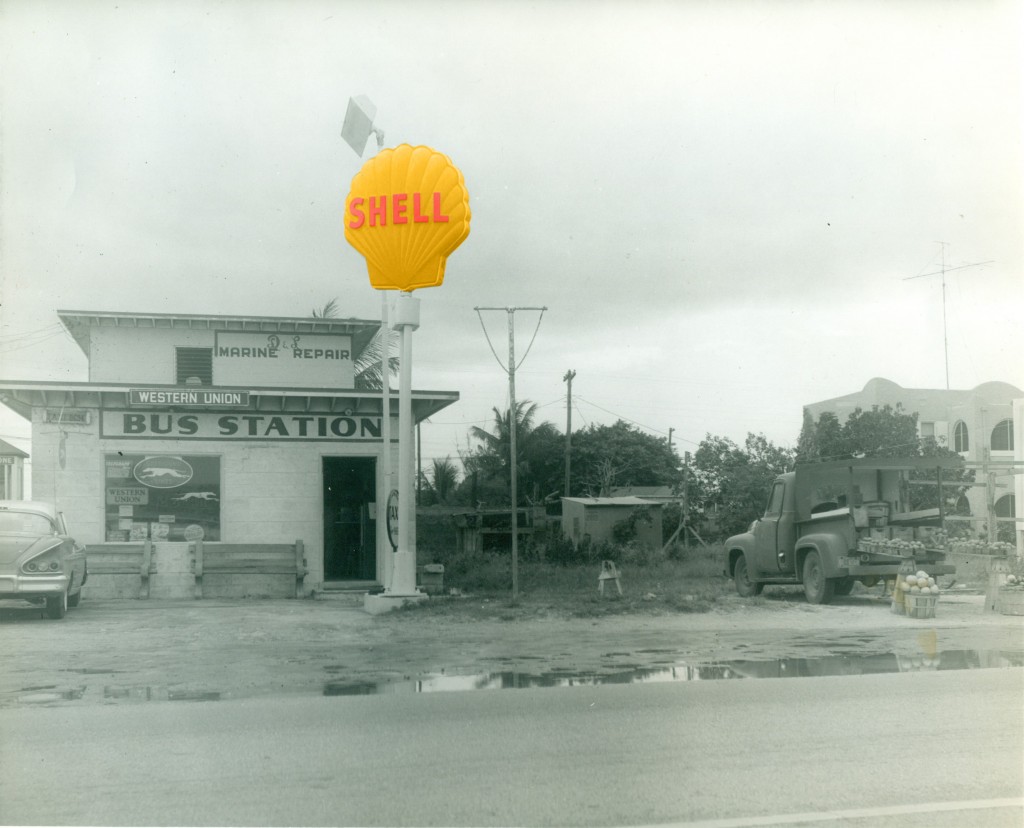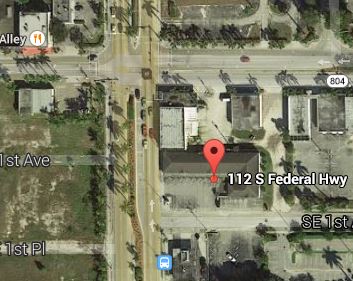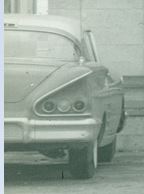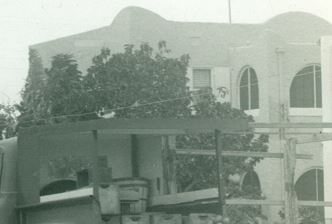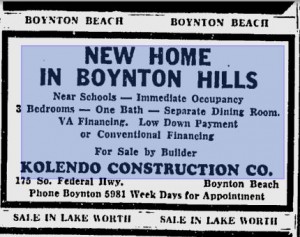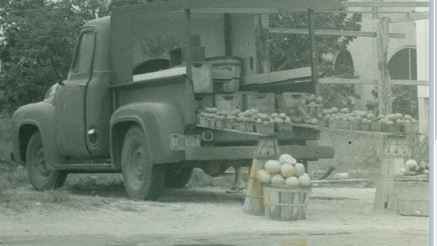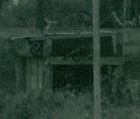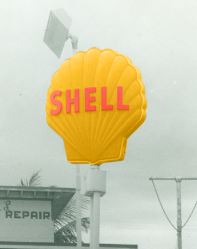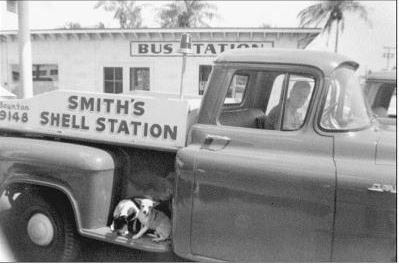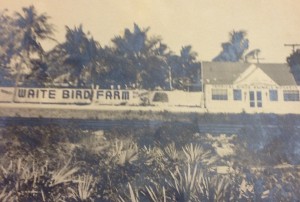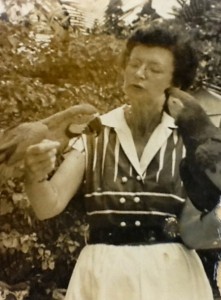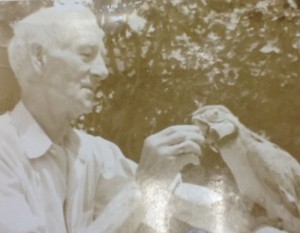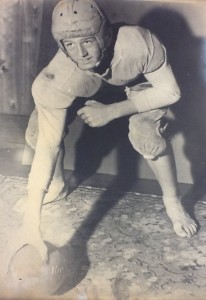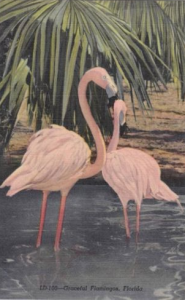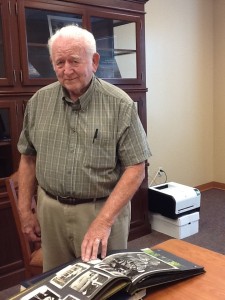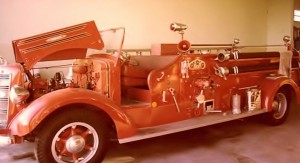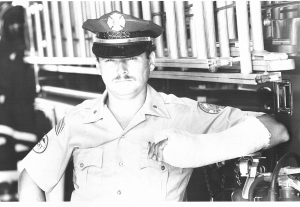In the great adventure that has been the story of Byrd Spilman Dewey and husband Fred S. Dewey, who filed the plat for the Town of Boynton in 1898, a few mysteries remained, nagging for an answer. We had wonderful photographs of the grand house they built in West Palm Beach called Ben Trovato (meaning “well invented” in Italian), but we knew there was another Ben Trovato, and that home stood somewhere in Boynton.
We didn’t know where the house was, nor how it looked. Not one person living in Boynton today had any recollection of the house.
We had a few clues. When Judge Earl Hoover researched Mrs. Dewey in 1966, he had a letter from prominent Boyntonite Bertha Williams Chadwell, who had moved to Boynton in 1907 and was friends with the Deweys. Mrs. Chadwell wrote: “The Dewey home stood at the corner of Second Avenue [Boynton Beach Boulevard] and the Dixie Highway [Federal Highway]. It was a big two-story house facing east. It is no longer in existence. It stood where the Cities Service Station now stands. The house was destroyed by fire later when owned by a succeeding owner, about 1920.”
That was our only clue as to the house’s location and how it looked. We combed through old pictures of Boynton from books, pamphlets, historical society newsletters, and other archival collections, but none seemed to match the location and the description.
In July, a postcard with a lovely frame vernacular Boynton house owned by A.P. Lynch appeared on the eBay auction website.
We checked land records and noted that the Deweys had sold their seven-acre citrus grove to Mr. Lynch in 1912. The Lynch house was two-story, but located on the east side of Federal highway at the corner of Ocean Avenue and Federal. We saw the Lynch house noted on the well-known 1910 “Boomer” map of Boynton, and a portion of the house is visible on an old snapshot from Cindy Lyman Jamison.
In August we pulled all the lot sales records from the original Town of Boynton at the Palm Beach County Courthouse for careful inspection of the lot buyer’s names and lot locations. We found that in 1912, the Deweys sold lots 1 through 5 in Block 1 of the original Town of Boynton to Charles T. Harper, which according to Mrs. Chadwell, is where the Dewey house stood. This information would also coincide with the year Mr. Dewey reentered the Soldier’s hospital in Johnson City, Tennessee and the Deweys left Boynton. Harper and wife Cora Stickney Harper would have lived in the house until they moved to Fort Pierce in 1913 when Charles was transferred to the Florida East Coast Railway station as head agent. In 1923, Charles sold the five lots to the Austin family.
The 1924 Sanborn Fire Insurance map shows no structures on lots 1 and 2, where the house had stood. It could be that the house had burned down by the time the map was drawn. This supports Mrs. Chadwell’s report of the house burning down in about 1920. Without further evidence we were left with only the probable location, and no idea what the house was like, other than it was two-story.
Then something very strange happened. Last week I was searching through the old Florida East Coast Homeseeker magazine, which was a sales tool for selling off Henry Flagler’s vast land holdings he had gained from the state of Florida for building the railroad. Several copies of this publication are scanned online in the HathiTrust archive, and once in a while I like to scroll through the pages and clip old photographs of areas long since developed.
As I was looking through the Homeseeker late one evening, Janet DeVries texted me about the Dewey house – would we ever really know what it looked like – could it be the Lynch house after all? I answered back that I doubted we could ever know what it looked like. I continued to scroll through the Homeseeker issue, which featured the Everglades drainage project. Some interesting pictures of dredges and such, then a picture of a Delray house with a wooden cistern that looked like a scene from the 1960s television show Petticoat Junction.
Then I scrolled to the next page—and saw a rather imposing two-story house in the woods—and the words “Ben Travato” [sic] sprang out from the page…and Dewey…and Boynton. It was as if I was guided to that page, that one page among the millions of books scanned online and their billions of pages, the one page that had a picture of the Dewey house in Boynton, at the exact moment we wanted to solve that mystery.
There it stood—in the wilderness of pine trees that was Boynton—the big two-story house, with a wonderful deck and unusual windows that is reminiscent of a Frank Lloyd Wright design. A shingled frame vernacular design with high ceilings and screened porches. There stood Fred and Byrd, she in her signature white dress with parasol, and Fred looking down from the deck with his familiar grey hat. The design was probably Byrd’s; from a 1936 letter: “I’ve built nearly a dozen cottages, and several big houses. My biggest ‘job’ is doing that sort of thing, as I’m my own architect, as well as landscaper, and it PAYS when we’ve needed nice sums in a hurry, and my husband was unable to work.”
The photograph is not sharp, having been scanned from the original lithographed magazine page. The photographer was listed as the “Florida Photographic Concern” and “Fort Pierce.” The company was based in Fort Pierce and run by Harry Hill, who was a bee-keeper and avid photographer. Many of his glass negatives have been preserved by the St. Lucie County Regional History Center; we contacted them to see if an original photograph exists in their archives. Hill did much photography for Flagler’s businesses, so he was probably hired to photograph the Dewey house.
I will leave the reader to draw conclusions as to how this happened as it did. A parable written by Mrs. Dewey, “Who Seeks Finds,” certainly fits what occurred in the rediscovery of the Dewey house in Boynton. The joy and triumph of finally seeing that wonderful home in Boynton still lingers. If spirits do return…
UPDATE 4/16/2016:
The newly updated Palm Beach Post archive at Newspapers.com revealed that the Dewey house burned May 16, 1916 in the early morning hours. No cause was given.


